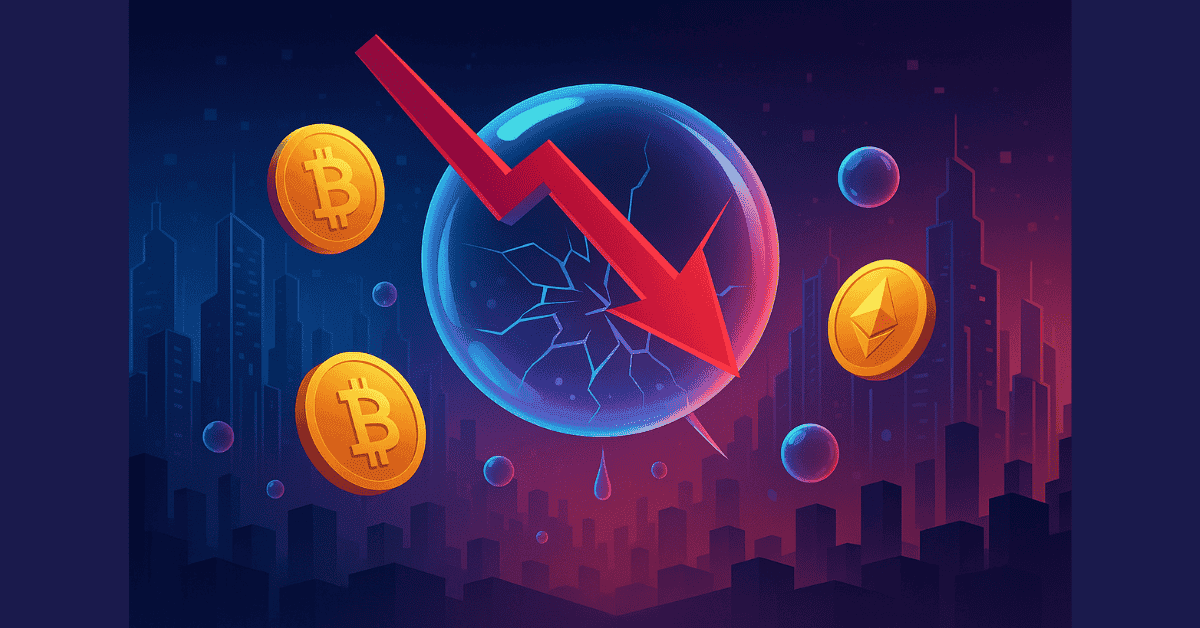
Crypto Bubble: Hidden Risks Behind the Hype
Economic bubbles don’t just occur in real estate or traditional stock markets – they are especially common in the world of cryptocurrencies. With explosive growth and widespread FOMO (Fear of Missing Out), the crypto market has witnessed multiple phases of “irrational surges” and devastating crashes. Let’s explore the nature of this phenomenon and the key lessons we can learn from the past.
1. What is a Crypto Bubble?
A crypto bubble occurs when the prices of cryptocurrencies like Bitcoin, Ethereum, or new project tokens soar far beyond their real or practical value. As speculation and inflows of capital increase rapidly, prices become inflated — and eventually, the bubble bursts, resulting in a severe market crash.
2. Common Types of Bubbles in the Crypto Market
-
- ICO/IDO Token Bubbles: During 2017–2018, hundreds of ICOs sprang up promising to “blockchain everything.” Many of these projects later collapsed or turned out to be scams.
-
- DeFi and NFT Bubbles: Between 2020–2021, the market saw absurd surges in token prices such as $YFI, $UNI, and NFTs priced in the millions of USD — without sustainable use cases.
-
- Meme Coin Bubbles: Coins like $DOGE and $SHIB surged dozens or even hundreds of times in value thanks to online hype and celebrity endorsements — not based on underlying technology or utility.
3. Causes of Crypto Bubbles
-
- FOMO and Excessive Optimism
Retail investors are often drawn into “x10, x100 profit” promises, buying tokens without due diligence. This herd mentality is frequently fueled by viral trends on social media and online communities.
-
- Easy Liquidity and Margin Trading
Many exchanges allow high leverage trading, while investors may lack risk management knowledge. When the market turns, losses can exceed the original capital.
-
- Rumors and Media Hype
Unverified news about new partnerships or tech use can drive token prices up rapidly — only to later disappoint when reality doesn’t meet expectations.
4. Stages of a Crypto Bubble (Based on Minsky’s Model)
-
- Displacement: A new trend emerges (e.g. DeFi, NFTs, Web3, AI tokens), sparking interest.
-
- Boom: Token prices surge, attracting waves of speculative investment.
-
- Euphoria: Investors pour in regardless of project fundamentals or utility.
-
- Profit-Taking: Smart money and whales begin selling near the peak.
-
- Panic: Prices collapse, retail investors panic-sell en masse, triggering a market crash.
5. Consequences of a Bursting Crypto Bubble
-
- Severe Investor Losses: Asset values can plunge 70–90% in days or weeks.
-
- Exchange and Project Collapses: FTX, Celsius, and Terra/Luna are notable examples.
-
- Loss of Market Confidence: Capital flight, widespread FUD (Fear, Uncertainty, Doubt), and retreat of retail and institutional investors.
-
- Contagion to Traditional Finance: Some major investment funds have suffered crypto-related losses, impacting broader financial systems.
6. Conclusion
The crypto market offers tremendous opportunities — but it also carries significant risks. Price bubbles can form unexpectedly, especially when speculation overrides fundamentals. To invest wisely and safely, it’s crucial to build solid knowledge, assess the intrinsic value of digital assets, and always maintain sound risk management strategies.